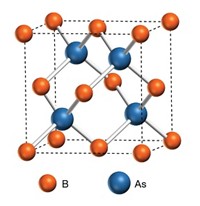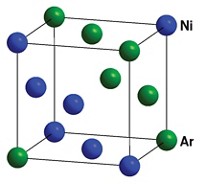Advertisement
Grab your lab coat. Let's get started
Welcome!
Welcome!
Create an account below to get 6 C&EN articles per month, receive newsletters and more - all free.
It seems this is your first time logging in online. Please enter the following information to continue.
As an ACS member you automatically get access to this site. All we need is few more details to create your reading experience.
Not you? Sign in with a different account.
Not you? Sign in with a different account.
ERROR 1
ERROR 1
ERROR 2
ERROR 2
ERROR 2
ERROR 2
ERROR 2
Password and Confirm password must match.
If you have an ACS member number, please enter it here so we can link this account to your membership. (optional)
ERROR 2
ACS values your privacy. By submitting your information, you are gaining access to C&EN and subscribing to our weekly newsletter. We use the information you provide to make your reading experience better, and we will never sell your data to third party members.
Astrochemistry
Cracking the chemical mystery of Mars’s core
2 analyses of seismic data conclude that the planet’s core is surrounded by a molten layer of silicate
by Katherine Bourzac, special to C&EN
October 30, 2023
| A version of this story appeared in
Volume 101, Issue 36
Scientists need to redraw their diagrams of Mars’s interior structure, according to two studies published this week. Based on analysis of seismic data from NASA’s InSight lander, both teams conclude that Mars’s liquid iron core is smaller than previously thought and is enveloped by a 150-kilometer-thick layer of molten silicate that scientists had not previously observed (Nature 2023, DOI: 10.1038/s41586-023-06586-4 and DOI: 10.1038/s41586-023-06601-8).
Research published in Science in 2021 provided the first sweeping seismic analysis of Mars, using data from InSight. That work overestimated the size of the planet’s core by about 30%, says Henri Samuel, a scientist at the French National Center for Scientific Research who was involved in the 2021 research and its recent revision. “This proves that we need to change our minds sometimes,” he says.
Seismologists can infer the structure of a planet based on how pressure and shear waves move through it. Pressure waves can propagate through both solids and liquids, while shear waves can’t travel through liquid—they get reflected. In the 2021 research, scientists believed they saw a shear wave that bounced off a liquid surface in the middle of the planet. They assumed this indicated the boundary between the liquid iron core and the solid silicate mantle. They concluded the core was larger and less dense than others had previously estimated.
A core with those properties would have to contain a relatively high proportion of lighter elements like hydrogen, sulfur, oxygen, and carbon along with iron and nickel. But that recipe seemed unlikely, given the volatility of those light elements and prevailing conditions when Mars formed. “Cosmochemists were saying, ‘that can’t be,’” says Suzan van der Lee, a seismologist at Northwestern University who was not involved with the research.
For the current studies, researchers analyzed tens of additional seismic events caused by meteor impacts and quakes, including a key event where a pressure wave slowed down in a way that suggested it was passing through molten rather than solid silicate. Working independently, both research teams concluded that the core is a relatively dense ball of liquid iron enveloped in a layer of molten silicate—eliminating the light-element problem.
To interpret the waves and what they mean about the layers of Mars, Samuel’s team used experimental data about materials such as iron alloys at extreme conditions; another team of planetary scientists at the Swiss Federal Institute of Technology (ETH), Zurich, relied on simulations of these material properties. The two teams’ predictions about the light element composition of Mars’s core vary a bit. ETH Zurich planetary scientist Paolo Sossi says more data about material properties at high temperatures and pressures should help resolve this. Overall, Sossi says, the teams reached very similar conclusions, which suggests “how robust this discovery is.”
Van der Lee says not to expect new data about Mars quakes anytime soon. InSight officially powered down in December 2022. But she expects other teams will continue to mine data from the lander, verifying and expanding on these results.





Join the conversation
Contact the reporter
Submit a Letter to the Editor for publication
Engage with us on Twitter